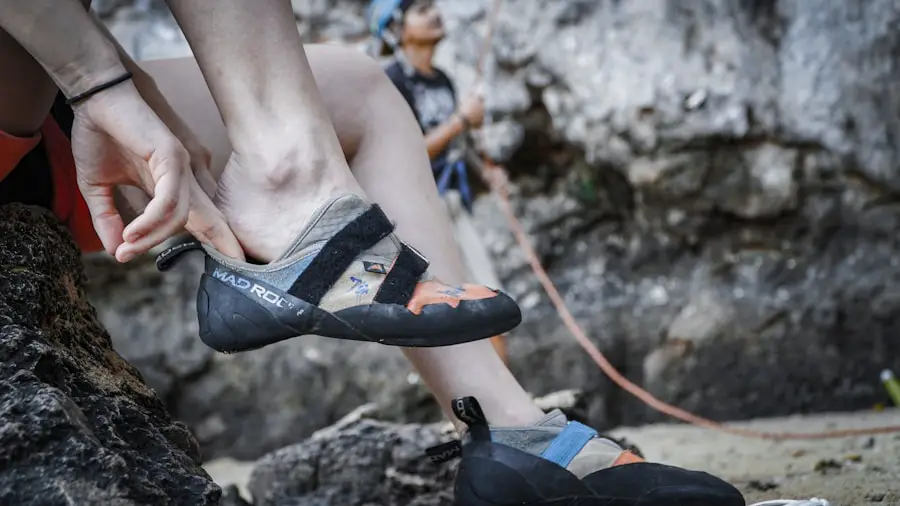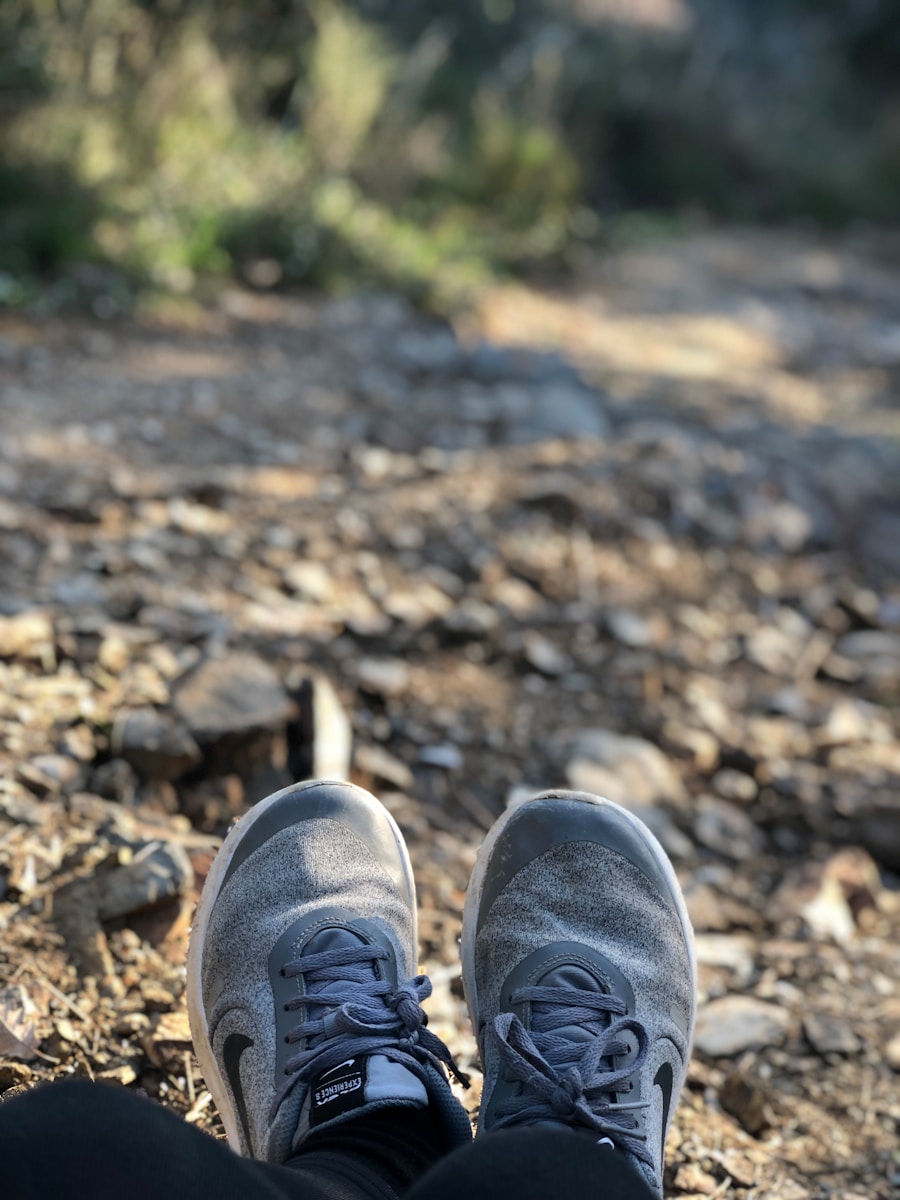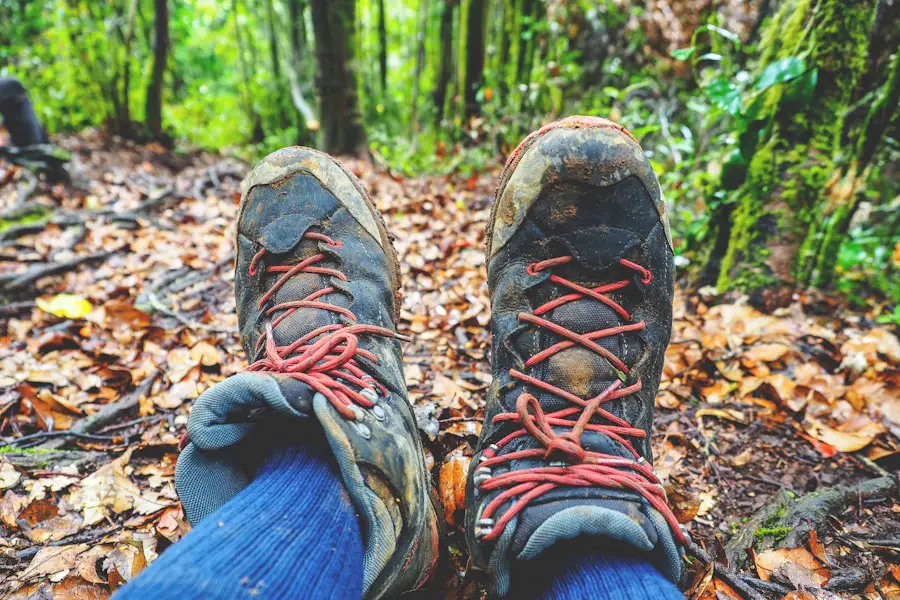Foot size and shape are critical factors that influence the comfort and performance of hiking shoes. The human foot is a complex structure composed of bones, muscles, tendons, and ligaments, which all contribute to its unique shape. While many people may think of foot size solely in terms of length, width is equally important.
The foot’s width can vary significantly among individuals, leading to different shoe requirements. For instance, a person with a narrow foot may find that standard-width shoes feel loose and unstable, while someone with a wider foot may experience discomfort or pinching in a standard fit. Moreover, the shape of the foot can also vary widely.
Some individuals have high arches, while others have flat feet.
These variations can affect how weight is distributed across the foot during activities like hiking. A high-arched foot may require additional cushioning and support, while a flat foot might benefit from stability features to prevent overpronation.Understanding these nuances is essential for selecting the right hiking shoe, as the wrong fit can lead to blisters, calluses, or even more severe injuries over time.
Key Takeaways
- Foot size and shape play a crucial role in finding the right hiking shoe
- Trying on hiking shoes in person is important for getting the perfect fit
- Measuring your feet accurately is essential for hiking shoe sizing
- Consider factors like terrain, sock thickness, and foot swelling when choosing hiking shoe size
- Tips for finding the right fit include trying on shoes in the afternoon and walking around in them for a while
The Importance of Trying on Hiking Shoes in Person
When it comes to selecting hiking shoes, trying them on in person is paramount. Online shopping has become increasingly popular due to convenience and often lower prices; however, it lacks the tactile experience of physically trying on shoes. Each brand has its own sizing standards and fit characteristics, which means that a size 10 in one brand may not equate to a size 10 in another.
By trying on shoes in person, hikers can assess not only the length but also the width and overall comfort of the shoe. Additionally, trying on shoes allows for a more comprehensive evaluation of how they feel during movement. Walking around the store or even simulating a hike can provide insights into how the shoe performs under pressure.
Factors such as heel lift, arch support, and toe box space become more apparent when the shoe is worn. This hands-on approach helps ensure that hikers select a shoe that will not only fit well but also perform optimally on various terrains.
How to Measure Your Feet for Hiking Shoe Sizing

Measuring your feet accurately is an essential step in finding the right hiking shoe size. To begin, gather a few simple tools: a ruler or measuring tape, a piece of paper, and a pen or pencil. Start by placing the paper on a flat surface and standing on it with your heel against a wall or straight edge.
Mark the longest point of your foot on the paper; this will give you your foot length. Repeat this process for both feet, as it’s common for one foot to be slightly larger than the other. Once you have your measurements, use the length to determine your shoe size according to the sizing chart provided by the shoe manufacturer.
It’s important to note that different brands may have slightly different sizing systems, so always refer to their specific chart. Additionally, measuring your feet at the end of the day is advisable since feet tend to swell throughout the day due to activity and gravity. This ensures that you account for any changes in size that may occur during prolonged periods of standing or walking.
Factors to Consider When Choosing Hiking Shoe Size
| Factor | Description |
|---|---|
| Toe Box Space | Ensure there is enough room for your toes to wiggle and move comfortably. |
| Arch Support | Consider the level of arch support needed based on your foot’s arch type (low, medium, high). |
| Ankle Support | Determine the level of ankle support required based on the type of terrain you will be hiking on. |
| Length | Choose a size that leaves a thumb’s width of space between your longest toe and the end of the shoe. |
| Width | Ensure the shoe is wide enough to accommodate the natural width of your foot without feeling too tight. |
Choosing the right size for hiking shoes involves several factors beyond just length and width. One critical aspect is the type of socks you plan to wear while hiking. Thick hiking socks can take up additional space in the shoe, so it’s wise to try on shoes with the socks you intend to use during your hikes.
This will help you gauge whether there’s enough room in the toe box and whether your heel remains secure without slipping. Another factor to consider is the type of terrain you will be hiking on. If you plan to tackle rugged trails with steep inclines or declines, you may want a snugger fit to prevent your foot from sliding forward within the shoe.
Conversely, if you’re hiking on flatter terrain or taking leisurely walks, a slightly looser fit may be more comfortable. Additionally, consider any potential swelling that may occur during long hikes; having a bit of extra room can help accommodate this without causing discomfort.
Tips for Finding the Right Fit for Hiking Shoes
Finding the right fit for hiking shoes requires attention to detail and patience. Start by trying on multiple pairs from different brands, as each brand has its own unique fit characteristics. When trying on shoes, ensure that there is about a thumb’s width of space between your longest toe and the front of the shoe; this allows for movement during descents without risking toe injuries.
Pay close attention to how the shoe feels around your heel and arch as well. A well-fitting shoe should hold your heel securely without causing any rubbing or discomfort. If you feel any pressure points or pinching sensations, it’s likely that the shoe isn’t right for you.
Additionally, walk around in the shoes for at least 10-15 minutes; this will give you a better sense of how they feel over time and whether they will remain comfortable during longer hikes.
Common Mistakes to Avoid When Sizing Hiking Shoes

One common mistake hikers make when sizing shoes is assuming that they will “break in” over time. While some shoes do stretch slightly with wear, relying on this can lead to significant discomfort or injury if the initial fit is too tight or improperly sized. It’s crucial to find a shoe that feels comfortable right from the start rather than banking on future adjustments.
Another frequent error is neglecting to consider foot swelling during hikes. Many hikers fail to account for how their feet may expand after hours of activity, leading them to choose shoes that feel fine initially but become painfully tight later on. To avoid this pitfall, always try on shoes at the end of the day when your feet are likely at their largest and consider going up half a size if you plan on long hikes or carrying heavy packs.
The Difference Between Men’s and Women’s Hiking Shoe Sizing
Understanding the differences between men’s and women’s hiking shoe sizing is essential for ensuring a proper fit. Generally speaking, women’s shoes are designed with a narrower heel and a wider forefoot compared to men’s shoes, which tend to have a more uniform width throughout. Additionally, women’s shoes often feature different arch support tailored to accommodate anatomical differences between male and female feet.
When selecting hiking shoes, it’s important not only to consider gender-specific sizing but also to recognize that individual preferences play a significant role in fit. Some women may find that they prefer men’s shoes due to their wider fit or different design features. Conversely, some men may find women’s models more comfortable based on their unique foot shape.
Trying on various options from both categories can help identify which style offers the best comfort and support for your specific needs.
When to Consider Custom or Specialized Hiking Shoe Sizing
In certain situations, opting for custom or specialized hiking shoe sizing becomes necessary for optimal comfort and performance. Individuals with unique foot shapes—such as those with severe pronation issues or high arches—may benefit from custom orthotics designed specifically for their feet. These orthotics can provide additional support where standard shoes fall short, helping prevent injuries during long hikes.
Moreover, those who frequently hike in extreme conditions or undertake challenging terrains may also consider specialized footwear designed for specific activities such as mountaineering or trail running. These specialized shoes often incorporate advanced materials and technologies tailored for particular environments, offering enhanced grip, waterproofing, and durability. Consulting with a professional at a specialty outdoor store can provide valuable insights into whether custom solutions are necessary based on individual needs and hiking goals.
When considering how hiking shoes should fit, it’s important to also think about the gear you’ll need for your outdoor adventures. One essential item to have is a reliable pair of waterproof sneakers, like the ones featured in this article 5 Must-Have Waterproof Sneakers for Your Spring 2025 Travels. These sneakers will not only keep your feet dry and comfortable during hikes, but they will also provide the necessary support and traction needed for various terrains. Additionally, investing in a quality travel pillow, such as the ones highlighted in Discover the 5 Best Travel Pillows for Long Flights This Spring, can make your outdoor excursions more enjoyable and restful. And don’t forget to pack a solar-powered camping lantern, like the one mentioned in this article, to illuminate your campsite at night.
Love travel? Join Our Facebook Community
FAQs
What are the key factors to consider when fitting hiking shoes?
When fitting hiking shoes, it’s important to consider the length, width, and volume of the shoe, as well as the overall comfort and support it provides for your feet.
How should hiking shoes fit in terms of length?
Hiking shoes should fit snugly but not too tight, with about a thumb’s width of space between the end of your longest toe and the front of the shoe. This allows for proper toe movement and prevents discomfort and injury.
How should hiking shoes fit in terms of width?
Hiking shoes should provide a comfortable and secure fit around the widest part of your foot, without feeling too tight or too loose. The shoe should not pinch or constrict your foot, but also should not allow excessive movement.
What is the importance of the volume of hiking shoes in terms of fit?
The volume of hiking shoes refers to the amount of space inside the shoe. It’s important for the shoe to securely hold your foot in place without causing pressure points or slippage. The shoe should feel snug and supportive without being overly tight.
What are some signs that hiking shoes do not fit properly?
Signs that hiking shoes do not fit properly include heel slippage, toe jamming, pressure points, blisters, and overall discomfort. It’s important to address these issues by finding a better-fitting shoe to prevent foot injuries and discomfort while hiking.
Why is it important for hiking shoes to fit properly?
Properly fitting hiking shoes are essential for comfort, support, and injury prevention while hiking. Ill-fitting shoes can lead to blisters, hot spots, and foot pain, which can significantly impact your hiking experience. A good fit also ensures better stability and traction on the trail.
